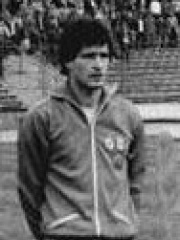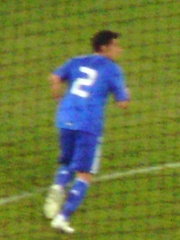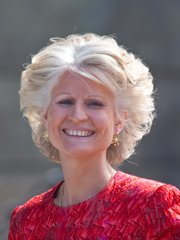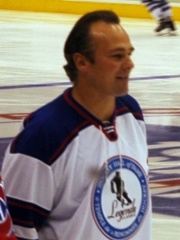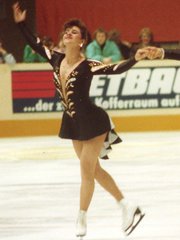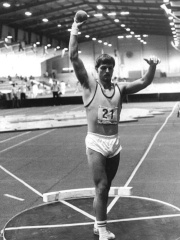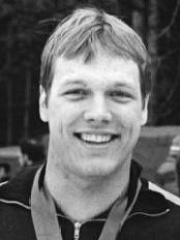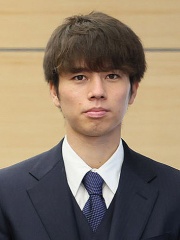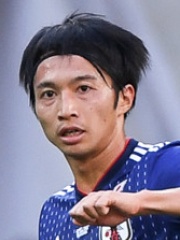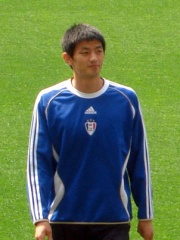SOCCER PLAYER
Shigeo Sawairi
1963 - Today

 Shigeo Sawairi
Shigeo Sawairi
Shigeo Sawairi (澤入 重雄, Sawairi Shigeo; born May 8, 1963) is a former Japanese football player and manager. Read more on Wikipedia
His biography is available in 27 different languages on Wikipedia. Shigeo Sawairi is the 9,153rd most popular soccer player (up from 11,801st in 2024), the 2,797th most popular biography from Japan (down from 2,704th in 2019) and the 1,119th most popular Japanese Soccer Player.
Memorability Metrics
Page views of Shigeo Sawairi by language
Among SOCCER PLAYERS
Among soccer players, Shigeo Sawairi ranks 9,153 out of 21,273. Before him are Soufiane Rahimi, Malick Thiaw, Samuel Holmén, Erik Jendrišek, Javier Farinós, and Masahide Hiraoka. After him are Rainer Troppa, Kaan Ayhan, Christian Perez, Vangelis Moras, Luis Amaranto Perea, and Ian Crook.
Most Popular Soccer Players in Wikipedia
Go to all RankingsSoufiane Rahimi
1996 - Present
HPI: 46.12
Rank: 9,153
Malick Thiaw
2001 - Present
HPI: 46.12
Rank: 9,154
Samuel Holmén
1984 - Present
HPI: 46.12
Rank: 9,155
Erik Jendrišek
1986 - Present
HPI: 46.12
Rank: 9,156
Javier Farinós
1978 - Present
HPI: 46.11
Rank: 9,157
Masahide Hiraoka
1995 - Present
HPI: 46.11
Rank: 9,158
Shigeo Sawairi
1963 - Present
HPI: 46.11
Rank: 9,159
Rainer Troppa
1958 - 2023
HPI: 46.11
Rank: 9,160
Kaan Ayhan
1994 - Present
HPI: 46.11
Rank: 9,161
Christian Perez
1963 - Present
HPI: 46.11
Rank: 9,162
Vangelis Moras
1981 - Present
HPI: 46.11
Rank: 9,163
Luis Amaranto Perea
1979 - Present
HPI: 46.11
Rank: 9,164
Ian Crook
1963 - Present
HPI: 46.11
Rank: 9,165
Contemporaries
Among people born in 1963, Shigeo Sawairi ranks 891. Before him are Anna Maria Corazza Bildt, Violeta Ninova, The Sandman, Dale Hawerchuk, Marc Maron, and Abdelfettah Rhiati. After him are Christian Perez, Ian Crook, Isabelle Duchesnay, Torsten Voss, Dmitri Galiamin, and Jörg Hoffmann.
Others Born in 1963
Go to all RankingsAnna Maria Corazza Bildt
POLITICIAN
1963 - Present
HPI: 46.22
Rank: 885
Violeta Ninova
ATHLETE
1963 - Present
HPI: 46.20
Rank: 886
The Sandman
WRESTLER
1963 - Present
HPI: 46.15
Rank: 887
Dale Hawerchuk
HOCKEY PLAYER
1963 - 2020
HPI: 46.15
Rank: 888
Marc Maron
PRESENTER
1963 - Present
HPI: 46.13
Rank: 889
Abdelfettah Rhiati
SOCCER PLAYER
1963 - Present
HPI: 46.12
Rank: 890
Shigeo Sawairi
SOCCER PLAYER
1963 - Present
HPI: 46.11
Rank: 891
Christian Perez
SOCCER PLAYER
1963 - Present
HPI: 46.11
Rank: 892
Ian Crook
SOCCER PLAYER
1963 - Present
HPI: 46.11
Rank: 893
Isabelle Duchesnay
DANCER
1963 - Present
HPI: 46.09
Rank: 894
Torsten Voss
ATHLETE
1963 - Present
HPI: 46.07
Rank: 895
Dmitri Galiamin
SOCCER PLAYER
1963 - Present
HPI: 46.07
Rank: 896
Jörg Hoffmann
ATHLETE
1963 - Present
HPI: 46.07
Rank: 897
In Japan
Among people born in Japan, Shigeo Sawairi ranks 2,797 out of 6,245. Before him are Yukana (1975), Naoki Ogawa (1995), Yuki Onishi (1996), Ayana Taketatsu (1989), Kenichi Hashimoto (1975), and Masahide Hiraoka (1995). After him are Koh Masaki (1983), Tetsu Inada (1972), Yuichiro Nagai (1979), Sakura Miyawaki (1998), Ao Tanaka (1998), and Yōko Hikasa (1985).
Others born in Japan
Go to all RankingsYukana
ACTOR
1975 - Present
HPI: 46.14
Rank: 2,791
Naoki Ogawa
SOCCER PLAYER
1995 - Present
HPI: 46.13
Rank: 2,792
Yuki Onishi
SOCCER PLAYER
1996 - Present
HPI: 46.13
Rank: 2,793
Ayana Taketatsu
ACTOR
1989 - Present
HPI: 46.13
Rank: 2,794
Kenichi Hashimoto
SOCCER PLAYER
1975 - Present
HPI: 46.12
Rank: 2,795
Masahide Hiraoka
SOCCER PLAYER
1995 - Present
HPI: 46.11
Rank: 2,796
Shigeo Sawairi
SOCCER PLAYER
1963 - Present
HPI: 46.11
Rank: 2,797
Koh Masaki
CELEBRITY
1983 - 2013
HPI: 46.11
Rank: 2,798
Tetsu Inada
ACTOR
1972 - Present
HPI: 46.10
Rank: 2,799
Yuichiro Nagai
SOCCER PLAYER
1979 - Present
HPI: 46.10
Rank: 2,800
Sakura Miyawaki
SINGER
1998 - Present
HPI: 46.10
Rank: 2,801
Ao Tanaka
SOCCER PLAYER
1998 - Present
HPI: 46.10
Rank: 2,802
Yōko Hikasa
ACTOR
1985 - Present
HPI: 46.09
Rank: 2,803
Among SOCCER PLAYERS In Japan
Among soccer players born in Japan, Shigeo Sawairi ranks 1,119. Before him are Takafumi Hori (1967), Gaku Shibasaki (1992), Naoki Ogawa (1995), Yuki Onishi (1996), Kenichi Hashimoto (1975), and Masahide Hiraoka (1995). After him are Yuichiro Nagai (1979), Ao Tanaka (1998), Hiroki Waki (1993), Shimon Watanabe (1990), Megumi Ogawa (1950), and An Yong-hak (1978).
Takafumi Hori
1967 - Present
HPI: 46.18
Rank: 1,113
Gaku Shibasaki
1992 - Present
HPI: 46.15
Rank: 1,114
Naoki Ogawa
1995 - Present
HPI: 46.13
Rank: 1,115
Yuki Onishi
1996 - Present
HPI: 46.13
Rank: 1,116
Kenichi Hashimoto
1975 - Present
HPI: 46.12
Rank: 1,117
Masahide Hiraoka
1995 - Present
HPI: 46.11
Rank: 1,118
Shigeo Sawairi
1963 - Present
HPI: 46.11
Rank: 1,119
Yuichiro Nagai
1979 - Present
HPI: 46.10
Rank: 1,120
Ao Tanaka
1998 - Present
HPI: 46.10
Rank: 1,121
Hiroki Waki
1993 - Present
HPI: 46.08
Rank: 1,122
Shimon Watanabe
1990 - Present
HPI: 46.05
Rank: 1,123
Megumi Ogawa
1950 - Present
HPI: 46.04
Rank: 1,124
An Yong-hak
1978 - Present
HPI: 46.04
Rank: 1,125






